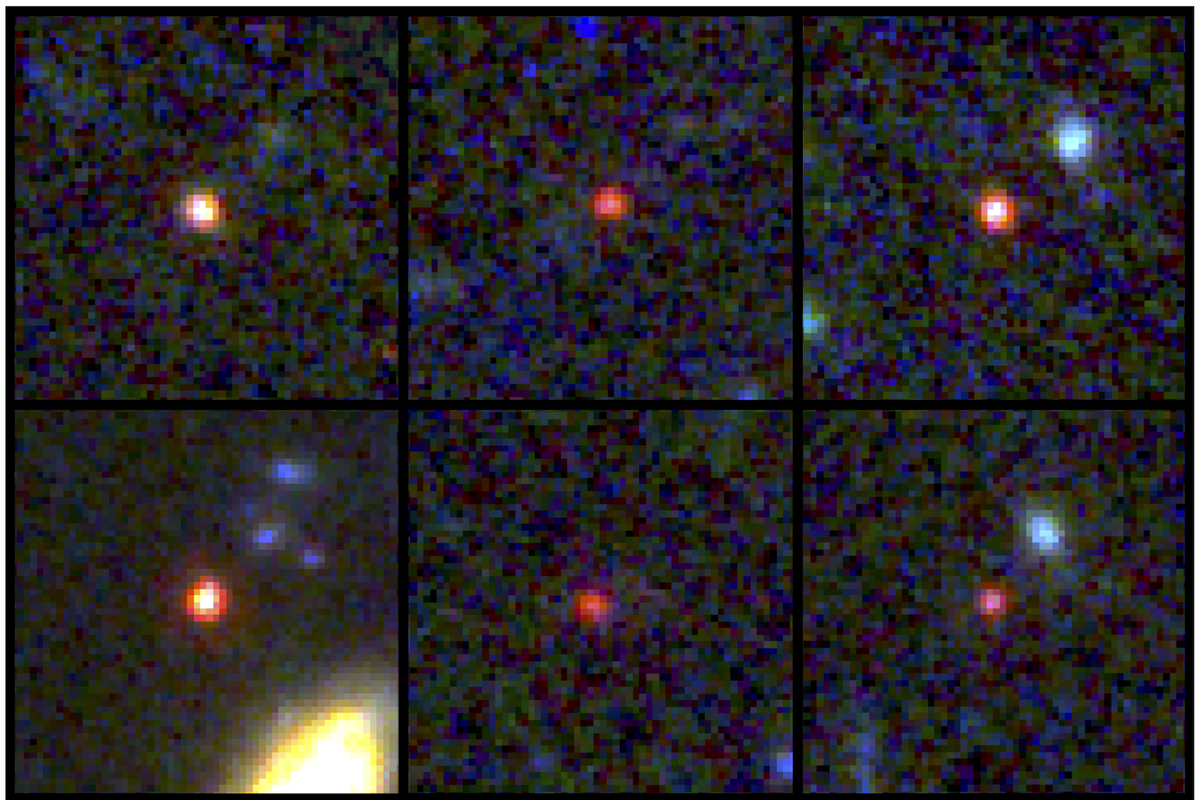
Six massive galaxies discovered in the early universe are challenging what scientists previously understood about their origins.
The galaxies are far bigger and more mature than anyone expected, in what was thought to be the dawn of the universe.
Using the first data released from Nasa’s James Webb Space Telescope (JWST) last July, the scientists found objects as mature as the Milky Way when the universe was only 3% of its current age – some 500-700 million years after the Big Bang.
It turns out we found something so unexpected it actually creates problems for science. It calls the whole picture of early galaxy formation into question— Joel Leja, Penn State University
Joel Leja, assistant professor of astronomy and astrophysics at Penn State University, America, said: “These objects are way more massive than anyone expected.
“We expected only to find tiny, young, baby galaxies at this point in time, but we’ve discovered galaxies as mature as our own in what was previously understood to be the dawn of the universe.”
The JWST is equipped with instruments that can detect light that was emitted by the most ancient stars and galaxies.
Essentially, it allows scientists to see back in time roughly 13.5 billion years, near the beginning of the universe as we know it, the experts say.
Mr Leja said: “This is our first glimpse back this far, so it’s important that we keep an open mind about what we are seeing.
“While the data indicates they are likely galaxies, I think there is a real possibility that a few of these objects turn out to be obscured supermassive black holes.
“Regardless, the amount of mass we discovered means that the known mass in stars at this period of our universe is up to 100 times greater than we had previously thought.
“Even if we cut the sample in half, this is still an astounding change.”
In the study, published in Nature, the researchers modelled light from the six galaxies and showed they are more massive than anyone expected, and call into question what scientists previously understood about galaxy formation at the very beginning of the universe.
Mr Leja said: “The revelation that massive galaxy formation began extremely early in the history of the universe upends what many of us had thought was settled science.
“We’ve been informally calling these objects ‘universe breakers’ — and they have been living up to their name so far.”
He added: “We looked into the very early universe for the first time and had no idea what we were going to find.
“It turns out we found something so unexpected it actually creates problems for science. It calls the whole picture of early galaxy formation into question.”
According to the researchers, the galaxies they discovered are so massive that they are in tension with 99% percent of models for cosmology.
Accounting for such a high amount of mass would require either altering the models for cosmology or revising the scientific understanding of galaxy formation in the early universe — that galaxies started as small clouds of stars and dust that gradually grew larger over time.
Either scenario requires a fundamental shift in our understanding of how the universe came to be, the study suggests.







